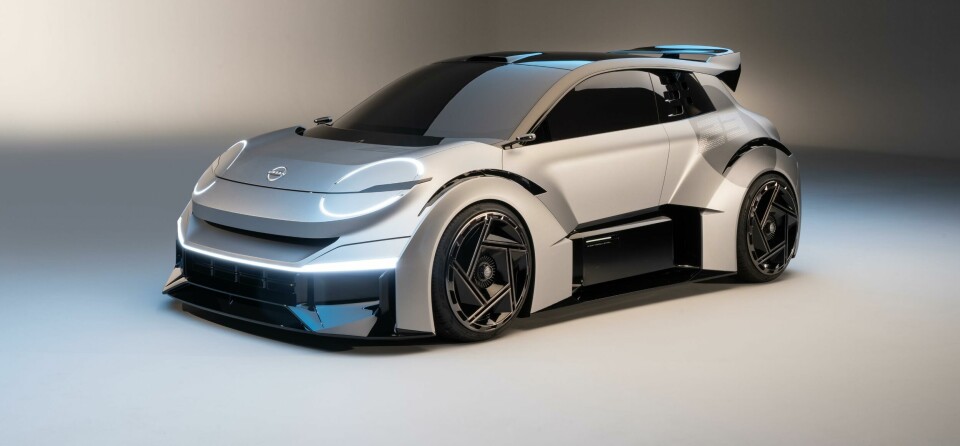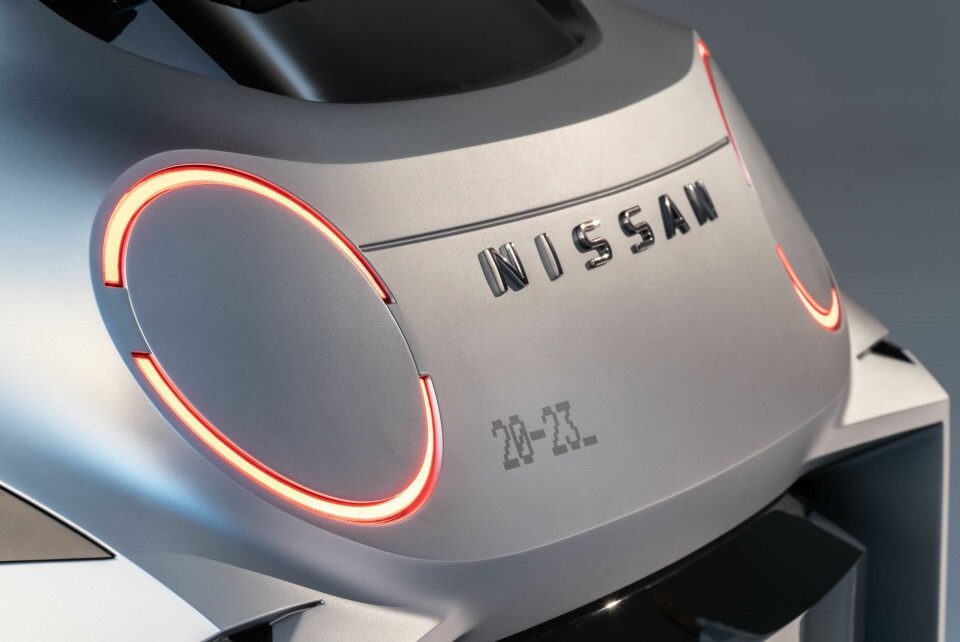
Nissan Design Europe celebrates 20 years with a multi-generational concept
The Nissan Concept 20-23 showcases the work of the team at the Nissan Design Europe studio as it celebrates its 20th year in London
The Nissan Design Europe studio in London is celebrating its 20th anniversary in 2023 and a cake simply wouldn’t have been enough. Instead they did something more in keeping with the team and designed a brand new concept car. Then to show how momentous an occasion it is, they floated it along the Grand Union canal on a barge in the presence of Nissan’s global president and CEO, Makoto Uchida.
The concept’s name is not as obvious as it might seem; 2023 of course, but also 20 to mark the anniversary, the traditional 2 (ni) and 3 (san), a number which adorns many of the automaker’s race cars. Racing was very much an inspiration for the concept, but with the project given to many of the younger members of the design team, it was more online racing than on-track.
While a future model can often be hidden in plain sight, the design team are adamant that the Concept 20-23 is just a piece of fun, something to showcase their work, celebrate the anniversary and get some insight into the minds of both the younger and older designers. That is certainly what came across when Car Design News spoke to members of the design team.
“The concept was started as a passion project,” says Matthew Weaver, vice president of Nissan Design Europe (NDE). “The brief was for the younger guys, what would be their dream car if they could make something electrifying and exciting as a solution for the city, thinking about their hobbies like online gaming. Naturally this quite compact footprint started to emerge and it evolved in the studio as a meeting point of the generations.”
Alessandro Messale was the lead exterior designer for the concept and he says one of the main objectives was to create a car to attract younger customers. “We need to make those who don’t think they need a car, to want a car – this car,” he says.
Inspired partly by the vibe of London that surrounds the studio, Messale says there is a need to create smaller cars for the city, to contrast the trend for SUVs. It’s also about creating a car that is about the experience, to show that electrification can be fun and exciting.
There’s something about this dense, confined space, where a million projects are happening
Weaver says the team were really interested in how they capture the excitement for the petrolhead and shift it into an electrified version, and they have done that by making the concept look friendly and approachable but at the same time juxtaposed with its racing cues.
Concept 20-23 has no physical interior, for now it only exists in sketches and in the virtual world, but that suited designer Sebastien Jesus and his team. The approach was inspired by an x-ray, where just as you may be able to see the skeleton of your fingers in your hand, you can see all the technical elements of the car. There are also no screens, instead the concept plays to an augmented reality future.
It’s very much about bringing back the fun factor of Nissan’s Pike models including the Be-1, Pao, S-Cargo and of course, the Figaro, a car which Alfonso Albaisa, senior vice president of global design at Nissan, says still inspires him today. When he first started at Nissan in 1988, he walked into the design studio and saw a model of the 300Z, but then went into another room and saw the model of the Figaro and was amazed at how different they were.
“I thought, what kind of company am I working for? That you can have this breakthrough mind to make a 300Z but then you can also make something charming and innocent,” he says, adding that in the time he has left with the company, he wants to achieve that diversity and contrast in the model range.

The concept celebrates 20 years of Nissan Design Europe, but looking back over those two decades, Albaisa sees a couple of clear highlights. The first is the Qashqai, a car which Nissan views as the first to define the new segment of crossovers and small SUVs. It was a model that he says management agreed to very easily, but that was not so true of the Juke.
“Juke is a different invention because it is intentionally unorthodox,” he says. “The interior was revolutionary with a big motorcycle tank, a bizarre, childish idea.” He sees the motorcycle tank as a schoolboy protest, possibly from frustration at other ideas not being implemented, but rather than being sent to the principal’s office, the design became reality.
Touring round the NDE studio, from the traditional clay modelling to the future of virtual reality design, it’s clear that after 20 years it is still a place of creative genius. But after 20 years, what is that makes the team work so well together?
“There’s something about this dense, confined space, where a million projects are happening,” says Albaisa. “It’s created an agility. It’s hard to explain but it’s a combination of knowing each other 20 years and then the ability of just doing it quickly.”
The experience of designers from multiple generations is evident throughout the studio and in the Concept 20-23. Whether it provides cues to future models the team won’t say, but it definitely showcases the spontaneity of the team, of the city that surrounds them and their passion to make people young and old excited about the future of the car.































